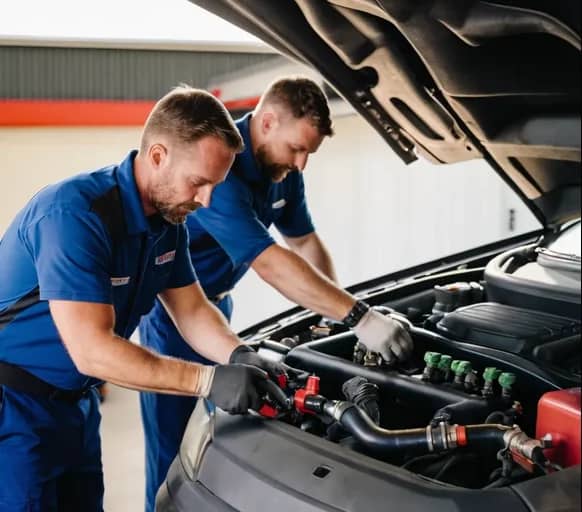Keeping your fuel clean is critical for optimal engine performance and longevity. Over time, gasoline can become contaminated with particulates, water, and other impurities that can clog fuel injectors, damage internal engine components, and cause performance issues. Implementing effective fuel filtration can dramatically improve fuel quality and prevent many problems downstream.
This comprehensive guide will teach you everything you need to know about fuel filtration, from why it’s important to different filtration methods you can use.
Modern gasoline contains many potential contaminants that make it through the refining and transportation process. Small particulates from dust, rust, and normal fuel degradation can build up over time. Condensation inside a fuel tank leads to water accumulation that drops to the bottom. Fuel can also be contaminated when transferred between containers. Without proper filtration, these contaminants make their way into the delicate fuel injection system and combustion chambers.

Particles as small as 40 microns can damage injectors and build up on intake valves. Water causes corrosion and allows bacteria growth inside the tank. These issues reduce engine power, decrease fuel economy, produce knocking/pinging, and will eventually lead to costly component failures if the contamination is not addressed. Proper fuel filtration removes these harmful contaminants before they reach the injection system.
Here are common scenarios when filtering gasoline is recommended:
Filtering your gasoline provides inexpensive insurance against contaminated fuel, especially when the source is unknown. Consider keeping a compact portable fuel filter in your vehicle for peace of mind when fueling up in remote areas.
There are several effective methods for filtering gasoline at home or on-the-go using inexpensive and readily available materials.
Aftermarket disposable fuel filters that mount inline between the fuel tank and engine are commonly used to filter particulates. These are available at any auto parts store for under $10. The filter housing contains a fibrous cellulose or synthetic element that traps contaminants as fuel flows through.
Disposable filters are effective at removing particulates down to 10-40 microns. However, they do little to remove water. The filter element must be replaced periodically as it becomes obstructed. Frequent replacement is recommended when filtering questionable fuel sources.
While most effective when permanently installed, disposable filters can also be used portably by mounting between two short segments of fuel hose. Clamps or quick connect fittings allow the filter assembly to be inserted inline when fueling up from dirty sources.
Specialized water separating fuel filters use coalescing media that causes small water droplets to combine into larger droplets. The water then falls to the bottom of the housing where it can be drained. In addition to water removal, they also filter solid particulates.
Water separating filters are commonly used on boats, generators, and heavy equipment where water contamination is prevalent. They provide superior water removal over standard filters, but are more expensive. Like disposable filters, they can also be configured for portable use when necessary.
Chamois leather is a soft, porous leather that has been used for decades to filter both water and particulates from gasoline. Before modern fuel filtration methods, chamois cloths were often carried in early automobiles to strain dirt and water from low quality fuel.
To filter fuel with chamois, fully saturate a large cloth with clean gas. Place it over the mouth of a funnel and slowly pour contaminated fuel through it. The chamois will absorb water and trap particles, allowing only filtered gasoline to pass through.
Chamois leather is still used today by boaters, remote pilots, and others dealing with dirty fuel where standard filters are impractical. It provides basic filtration when nothing else is available.
Basic paper filters, such as coffee filters, filter bags, or even paper towels can remove particulates when soaked with fuel. The paper’s porous fiber matrix captures contaminants as fuel passes through.
To filter with paper, place the material over a funnel and saturate it with clean fuel first. Then slowly pour contaminated fuel through it into a clean container. The particulates will remain on top of the paper. This method is messy and less ideal than other options, but works in a pinch.
A centrifugal filter spins fuel at high speeds inside a perforated tube. Centrifugal force causes dense contaminants to separate and stick to the outside walls. Slowly pouring gasoline though a salad spinner works on the same principal. These are often used as a pre-filter before finer filtration.
While not as precise as media-type filters, centrifugal devices allow large amounts of fuel to be quickly pre-filtered when working with extremely contaminated sources.
When using disposable particulate or water separating filters, monitor the pressure drop across the filter and replace per the manufacturer’s guidelines. Date and label the filter when installed. Discard and replace if fouled by a bad fuel source.
Periodically inspect and clean reusable centrifugal or paper pre-filters. Chamois leather and other media should be reserved for fuel filtering only and kept sealed in a clean container between uses. Properly handling and maintaining your filters ensures they continue removing contaminants.
Once sufficiently filtered, gasoline can be stored for extended periods in sealed containers without degradation. Plastic and metal are ideal materials. Ensure containers are clean and free of rust or other contaminants prior to use. Funnels used should also be clean and only used with fuel. Store containers away from direct sunlight and extreme temperatures. Adding fuel stabilizer can prolong storage life.
Fuel contamination can sneak up over time, resulting in frustrating performance issues. But with proper diligence and filtration, you can keep that fuel clean and engines running smoothly. Implementing the filtration methods discussed can pull double duty by cleaning up old gas and preventing future contamination. Just remember to always filter first when fuel quality is uncertain and your engine will thank you!